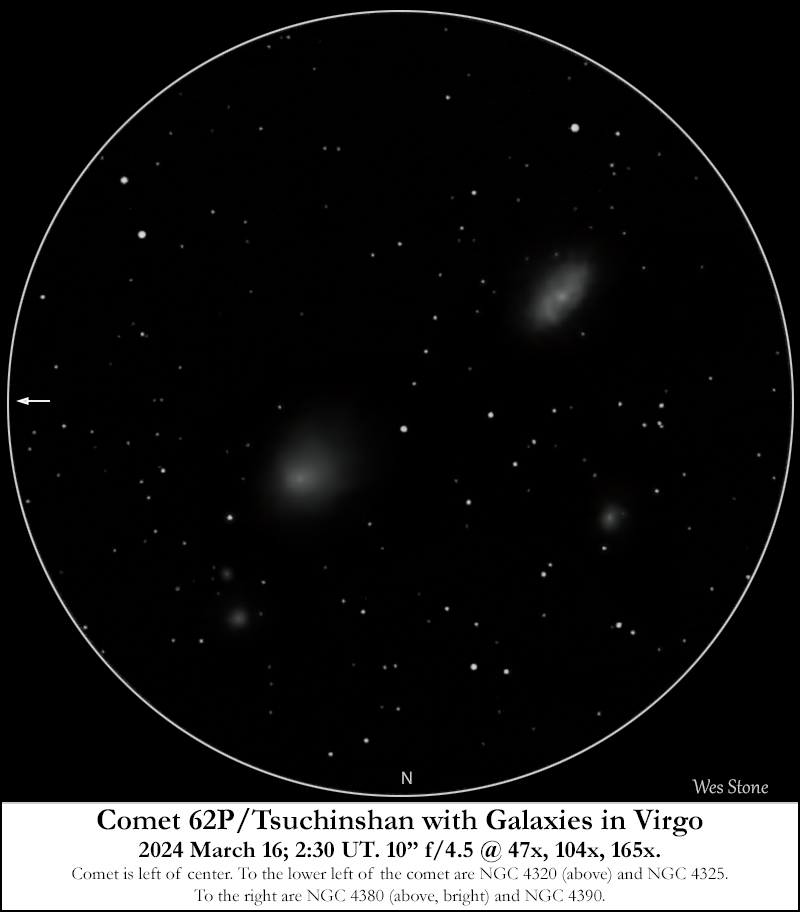Comet C/2024 G3 (ATLAS)

This comet (and the weather) teased me a bit. Viewing circumstances were never going to be great for mid-northern latitudes. The morning of Saturday, January 11th turned out to be an exception, as I got reports of the comet being spotted with the naked eye from 40 degrees north. But when I went to bed on Friday evening, it looked like rain was turning to snow. I was surprised and chagrined to wake up to clear skies on Saturday morning, a bit too late to chase a comet. The comet was to make a close approach to the Sun on Monday the 13th, swinging around north of the Sun before plunging back south. There was a chance the comet might brighten enough to be visible during daylight. I got up early on Sunday morning, but there were too many clouds near the horizon. I tried for the comet at midday on Sunday, but there had been a frost overnight and little particles of ice and frost were moving through my binocular field, the more distant and nearly stationary ones looking like annoying false ...




